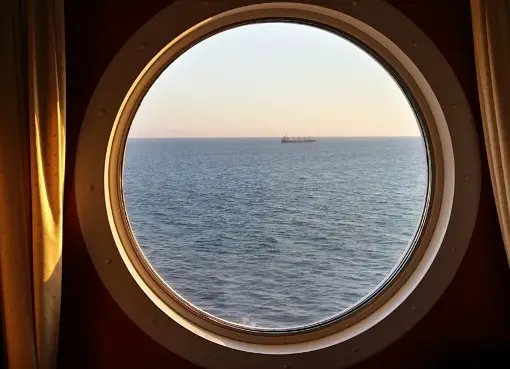By the definition given by US coast guard “clean ballast” means: “…ballast in a tank which, since oil last carried in it, has been so cleaned that ballast, if discharged from a stationary vessel into clean, calm water on a clear day, would make no visible traces of oil on the water surface or adjoining shore lines or cause a sludge or emulsion to be deposited beneath the water surface or on adjoining shore lines.”
It takes very little oil to produce a trace on the water’s surface, therefore ballast containing even a small amount of oil which can leave a trace on the sea is dirty ballast and is prohibited to be pumped out at sea. Dirty ballast is usually taken in port alongside, immediately on completion of discharging, into tanks that have not been water washed after it has carried cargo.
From this we can define what are CBT’s and SBT’s.
- CBT’s are Clean Ballast Tanks – carrying clean ballast as defined above.
- SBT’s are Segregated Ballast Tanks – These are tanks solely for the purpose of carrying ballast and no oil cargo. These tanks have separate lines, separate pumps and are totally isolated from the cargo system and the ship’s fuel system. Hence there is very little possibility of contamination with oil in these tanks.
However there is a possibility of oil in these tanks if any of the cargo pipelines passing through them develops a leak. Oil may also find its way into these tanks if any of the ballast lines passing through cargo tanks is leaking. Another important factor to note here is that the ballast tank may be contaminated if the bulkhead between the ballast and cargo tanks develops a crack and leaks.
Why do we need to change ballast at sea on non-SBT tankers?
Most tankers operating today are conventional type non-SBT tankers, although there are some new tankers, which are double skin or fully segregated ballast tankers.
On SBT tankers normally there will be no need for a change of ballast at sea except for the purpose of ballast water exchange regulation of MARPOL Annex VII which is at present in force in Australia the Great Lakes and a growing number of other port authorities. In case the ballast needs to be changed, a ballast exchange plan should be prepared ensuring that the stresses and stability are within permissible limits.
On clean ballast tankers as explained earlier:
- On completion of discharge ballast has to be taken into cargo tanks which will be dirty ballast.
- This dirty ballast will be contaminated with some oil.
- This oily ballast cannot be discharged in port and hence requires to be changed at sea.
- The nominated clean ballast tanks are thoroughly washed at sea with sea water to ensure that there is no trace of oil left in the tanks.
- These ballast tanks are then filled with clean ballast clean enough to be discharged inside a harbour.
- The dirty ballast is then pumped out to sea using the LOT procedures which is explained in this module.
PLEASE NOTE
If the tanker is fitted with crude oil washing system and if the oil carried is suitable for carrying out cow – then the ballast tanks carrying both dirty ballast and clean ballast must be crude oil washed before ballasting
Precautions when taking in dirty ballast
- The most critical time while taking in dirty ballast is at the commencement of the operation because any negligence can lead to a pollution incident within the harbour. The procedure for starting is as follows :
- Set the lines for ballasting from sea but keep the sea suction valve
- Start the pump at a slow speed first to create a small amount of vacuum in the line from the pump leading to the sea suction. This can be verified by the pressure gauge, which is normally fitted on the inboard side of the sea suction valve.
- Only after the vacuum in the line is confirmed, open the sea suction valves so that water flows into the ballast tanks. This will prevent any oil from the lines or pumps inadvertently leaking into the sea.
- Before starting the ballasting operations – flush the entire system (line, valves and pump) to one tank, that is the forward most tank to be ballasted. By doing so it can be ensured that all the lines are flushed thoroughly. Flush each line for at least 20 -30 minutes.
- Ensure tanks are set to vent to the atmosphere. Failure could lead to either too much pressure or vacuum inside the tank causing structural damage.
- Another critical period during the operation is when the dirty ballast tanks are being topped up. Never let the tank overflow – remember oil will always float on top of the water and an overflow will lead to a pollution incident.
- Do not depend solely on the fixed ullaging system. It is good practice to manually check the ullages of the tanks being ballasted and also to inspect the tanks at regular intervals during ballasting.
- Monitor the sea around the area to ensure that no oil leaks out. If any pollution is detected shut the sea valves A person should be standby at the sea valves during ballasting operations, specially during the start and completion of ballasting.




